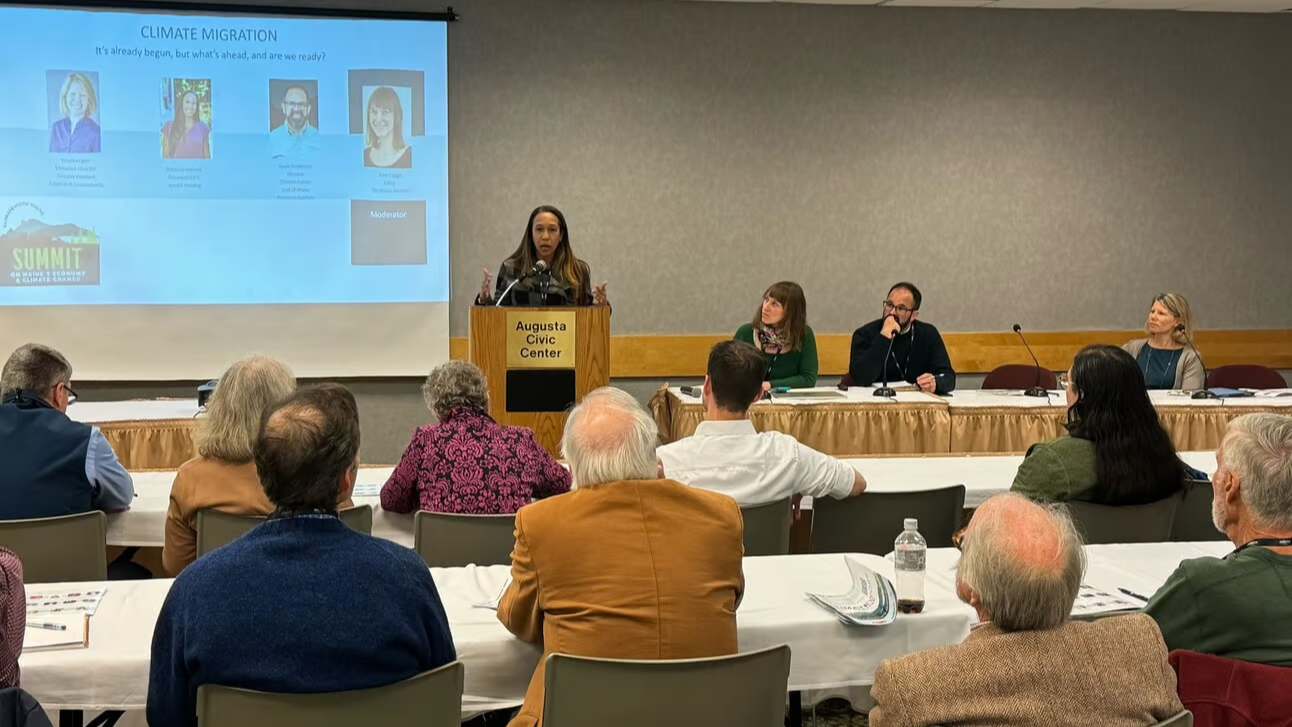At ClimateWork Maine’s 2024 summit in Augusta on Thursday, experts on everything from the grid to climate migration returned again and again to the same basic appeal: Change is inevitable. Embrace it, and shape it.
Beyond climate change itself, which is already transforming Maine’s weather patterns, seasons, ecosystems and communities, speakers urged Mainers to embrace the changes needed to respond to these shifts, with thoughtful, inclusive planning.
The Monitor editor Kate Cough moderated the summit’s migration panel, which built on Kate’s and my past reporting to look at sustainable ways of growing our communities to accommodate today’s population as well as tomorrow’s.
Worsening inequality has been a consistent result of historic mass migration events, said Gulf of Maine Research Institute Climate Center director Dave Reidmiller. “That’s something that we need to be particularly mindful (of) as we think about how climate migration might unfold here,” he said.
In Maine, this will mean looking at housing, transportation, local planning, land use and climate resilience all at the same time, speakers said.
“It’s not just the increasing amount and pace of the housing that we’re bringing online,” said Rebecca Hatfield, the CEO of New England affordable housing developer Avesta. “We have to bring that housing into climate-resilient areas.”
Diversity, density & resilience
Ideal development will prioritize resilience, emphasize density and embrace diversity, said Kristina Egan, the executive director of the Greater Portland Council of Governments.
She urged a form of “smart growth” where, she said, “you try to build more homes where people already have a lot of connectivity, where there’s public transportation or there’s infrastructure,” while prioritizing “climate-safer” places.
Without a focus on density, Egan said, growth will mean more emissions from driving longer distances to far-flung housing. Without a focus on resilience, it could put new residents in harm’s way from extreme storms or rising seas.
Egan urged residents who may worry about climate change but eschew affordable housing in their communities to link the two issues in their minds.
“When people come, what we can do at the local level is shape the growth, but we can’t stop it. If we try to stop it, then it’s going to go somewhere,” Egan said. “If you care about natural areas … then you need to care about supporting housing in the right places.”
Developers should talk to communities early and often to ensure that what’s built reflects local values and goals, such as historic preservation, walkability or accessibility, she said.
Equity for current & future residents
Pandemic-era migration to Northern New England priced some lower-income longtime residents out of existing housing, panelists said — and communities should be preparing to avoid a potential repeat of this problem in the future.
“We want to make sure that we’re building affordable and workforce housing in these towns right now, so 10 years from now, if there is a huge climate migration, we’ve already preserved housing for the folks that need to live there,” said Hatfield.
Low-income families, she said, “have less ability to be mobile if something happens, and they have less access to resources” — like money for rising insurance costs, transportation or childcare. Smart growth, she said, requires planning to insulate these vulnerable residents.
Change is inevitable: Embrace it, and shape it.
“By actually engaging in the process instead of fighting it, you can control the change, you can actually have a voice in the change, so that the solution that’s delivered is more in line with what you feel should happen,” said Hatfield.
P.S. To the question asker at Kate’s panel who wanted to check the numbers on the age of Maine’s housing — I have a chart for that, with U.S. Census data:







